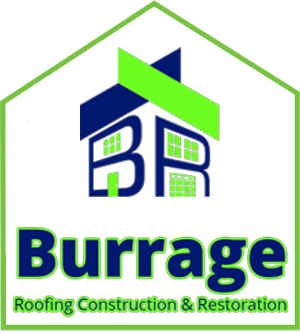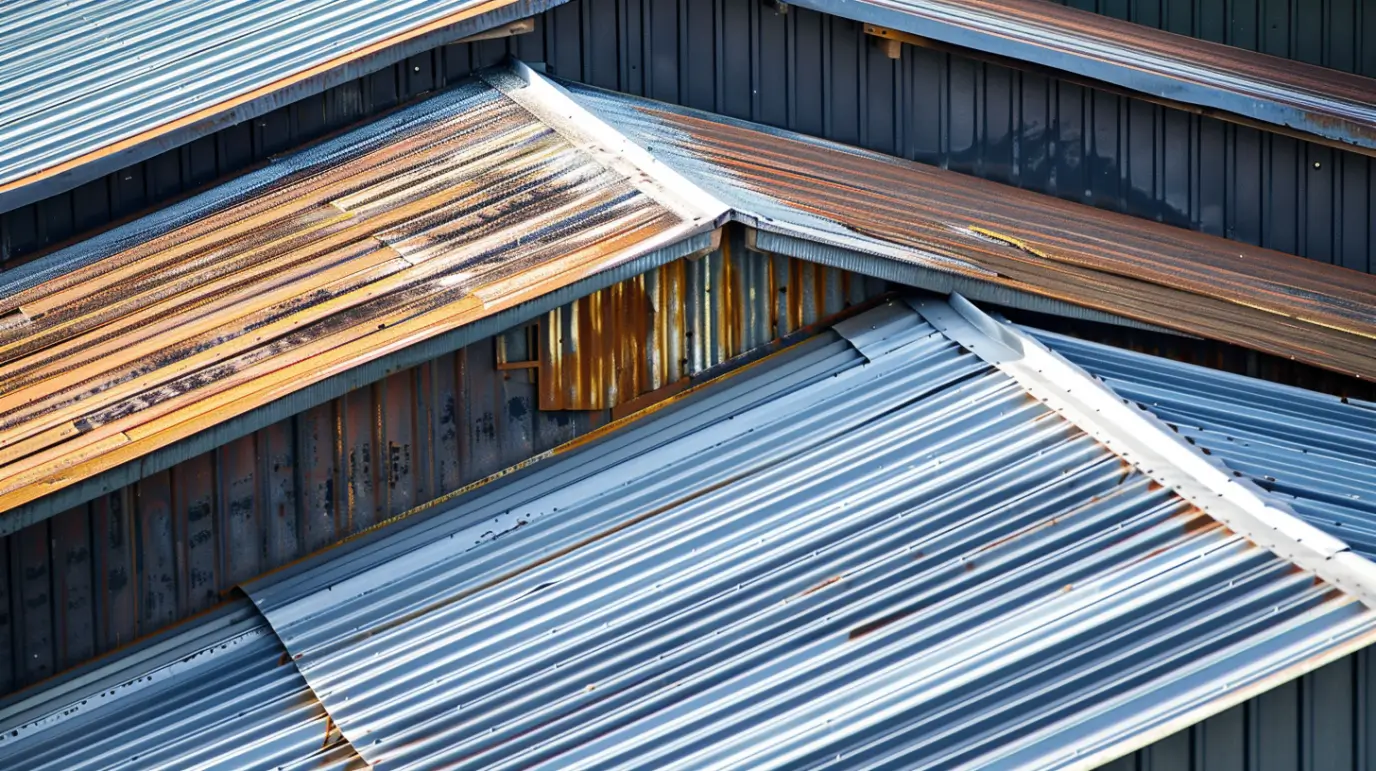Galvanic corrosion can silently damage your metal roofing. It occurs when two different metals touch in the presence of an electrolyte, like water, accelerating corrosion and leading to visible damage. Understanding its causes and prevention can save you from costly repairs. At Burrage Roofing, we help Quad Cities residents safeguard their roofs with expert advice. Let’s explore galvanic corrosion and its impact on metal roofs.
Understanding Galvanic Corrosion in Metal Roofs
Galvanic corrosion occurs through an electrochemical process when two dissimilar metals come into contact. Metal roofs are particularly vulnerable, especially in the presence of moisture or pollution, which intensifies the corrosion.
Understanding the causes of galvanic corrosion in roofing materials is crucial for both installers and homeowners. This knowledge helps maintain the roof’s integrity and longevity. Let’s explore how galvanic corrosion occurs and its underlying processes.
Contact Us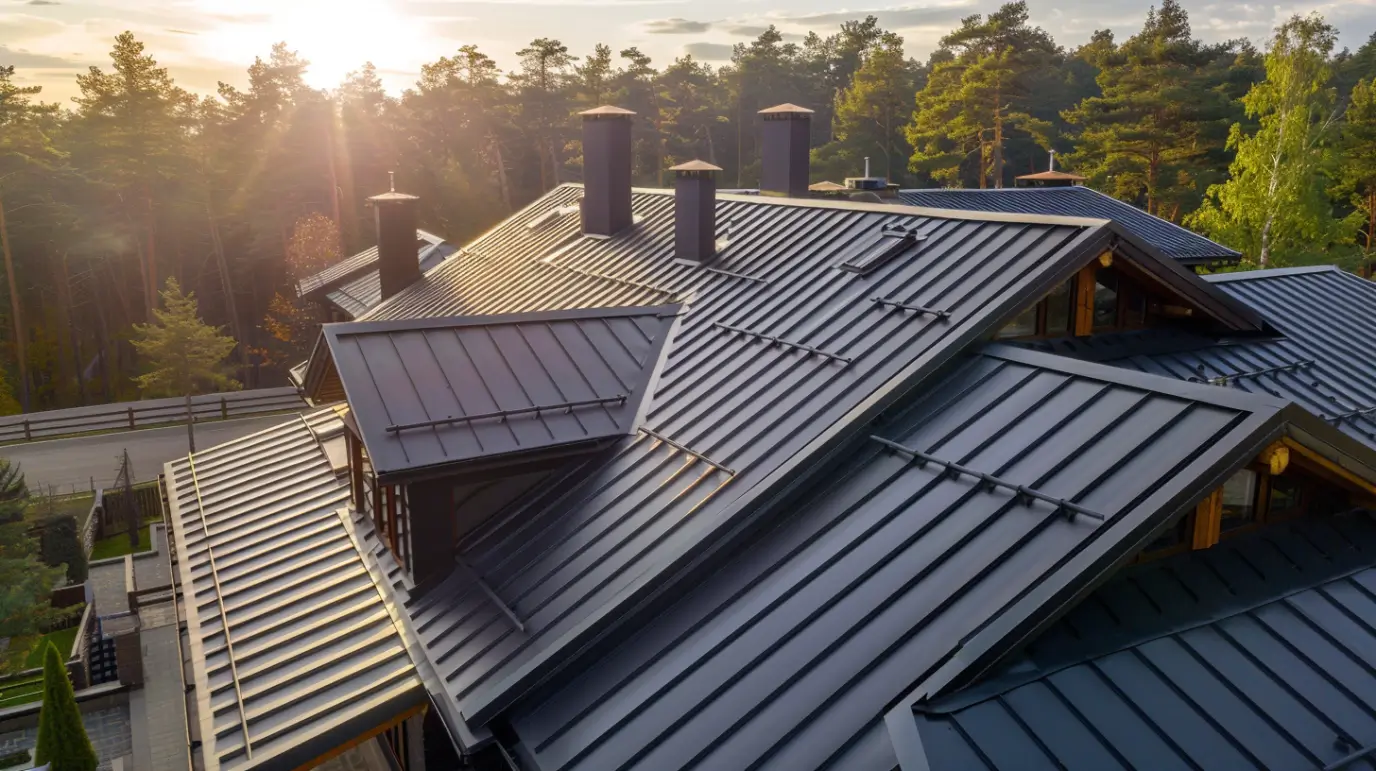
What Is Galvanic Corrosion and How Does It Occur?
Galvanic corrosion occurs when two different metals contact each other in the presence of an electrolyte, like water or condensation, leading to an electrochemical reaction. The anode corrodes faster while the cathode resists.
For instance, stainless steel fasteners touching aluminum alloys in salty environments can accelerate aluminum rusting, especially if the anodic area is small compared to a larger cathodic surface.
Moisture, condensation, and airborne dirt act as electrolytes, accelerating corrosion and causing bubbling, red rust, and paint loss. Understanding these factors enables better material and fastener choices to prevent rust and corrosion.
Common Signs of Galvanic Corrosion on Roofs
Visible corrosion on metal roofs often indicates galvanic corrosion. Bubbling or flaking paint, especially around joints and fasteners with dissimilar metals, exposes underlying material and accelerates deterioration.
Water runoff areas, like gutters and pipe penetrations, are prone to corrosion. Red rust on less noble metals, such as aluminum alloys, signals an active electrochemical process. Corrosion on stainless steel alongside copper components suggests improper fastener use or a need for protective coating. Monitoring these signs enables timely interventions, such as panel replacement or relocating dissimilar materials to prevent further damage.
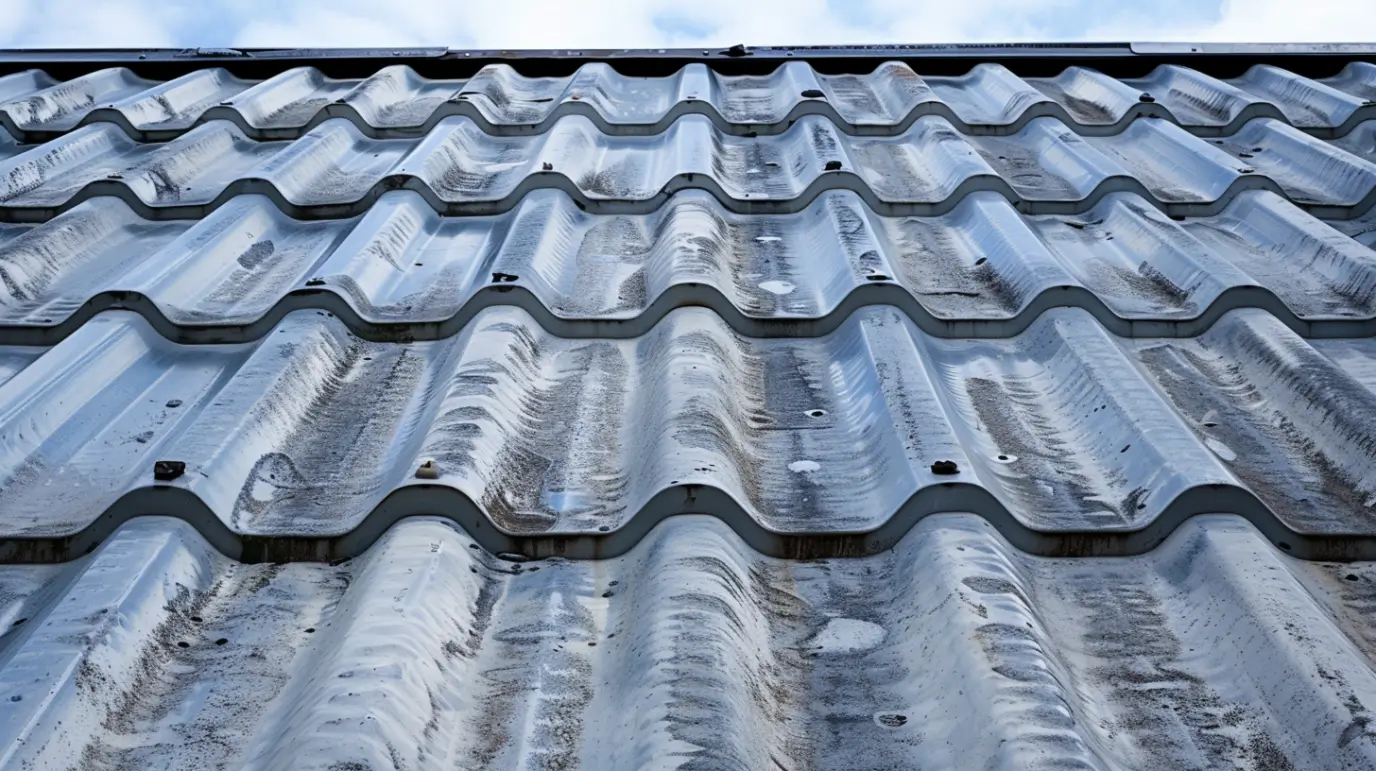
Dissimilar Metals and Their Impact on Roofing
The metals you use in roofing are very important. When you join dissimilar metals, there can be a higher chance of galvanic corrosion. If metals with large differences in the galvanic series touch, it often leads to corrosion.
Putting together a roof with incompatible metals, for example copper and aluminium or zinc, has a bigger risk for damage. The right choice of roofing materials or using ways to separate them can help cut down time and money spent on repairs. Next, we will talk about common metals used for roofing and see if they work well together.
Frequently Used Metals in Roofing Systems
Metal roofing systems use various materials for durability and longevity. Stainless steel is notable for its corrosion resistance and compatibility with coatings, while aluminum alloys are lightweight and minimize corrosion when in contact with less noble metals.
Copper is valued for its aesthetic appeal and durability, especially in premium applications. However, galvanic corrosion can occur when different metals touch, making the choice of fasteners and accessories essential. Proper selection prevents visible corrosion and extends the roofing system’s lifespan.
Why Mixing Metals Can Lead to Problems
Using dissimilar metals on a roof can cause corrosion of the weaker metal due to differing electrochemical properties. Less noble metals, like zinc, corrode faster in contact with more noble metals, like copper.
For example, a copper roof draining over aluminum panels can create corrosive runoff that accelerates aluminum degradation, leading to rust and bubbling. Inappropriate fasteners further increase corrosion of the anodic metal, resulting in visible roof damage.
Understanding the galvanic series is essential to avoid incompatible metal combinations. Implementing barriers between metals or selecting better alternatives can prevent these issues, ensuring a longer-lasting and high-performing roof.
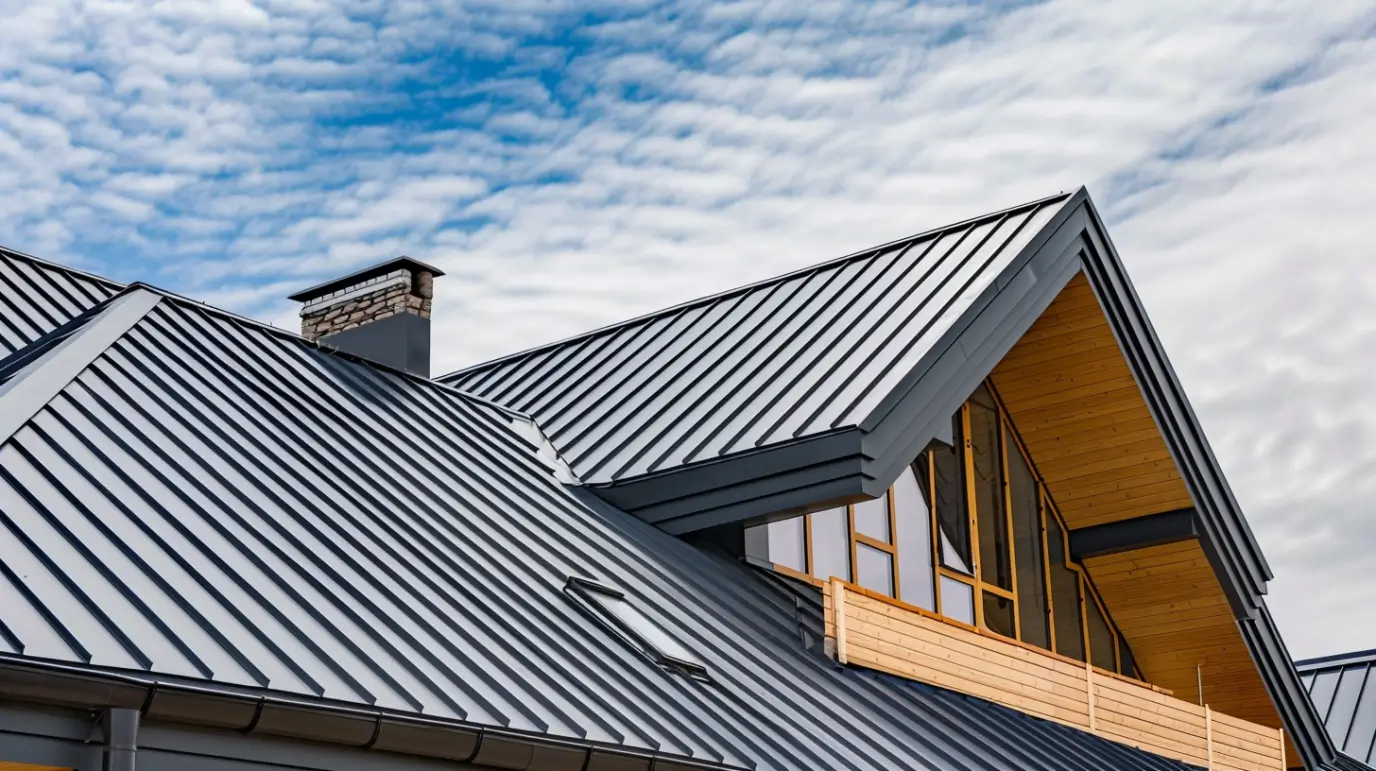
Key Factors That Accelerate Galvanic Corrosion
Environmental factors can make galvanic corrosion much worse. Things like moisture, pollutants, and salt water work as electrolytes. These make chemical reactions happen faster, especially in places with high humidity.
Water runoff with contaminants or contact with untreated lumber can add more risk to roofing materials. Installers and homeowners should know that these things make corrosion happen quicker. This knowledge helps them protect metal roofs from getting damaged over time. Next, we will look even deeper at how factors such as moisture and hardware can change corrosion rates.
Role of Moisture, Salt, and Pollutants
Moisture accelerates galvanic corrosion in metal roofing. Rain, condensation, and melting snow serve as electrolytes, worsening wear by connecting different metals.
Salt from coastal areas or deicing agents is also a potent electrolyte. Pollutants like sulfur oxides can mix with moisture, increasing acidity and further damaging metals. For instance, high nitrate levels can significantly harm steel roofs.
Regular maintenance and cleaning are essential for metal roofing. Properly draining water helps reduce moisture, slowing corrosion and prolonging the roof’s lifespan.
The Importance of Proper Fasteners and Hardware
Using the wrong fasteners can lead to early galvanic corrosion. Stainless steel fasteners may not be compatible with aluminum-coated roofing in highly corrosive areas.
Bubbling paint around fasteners indicates potential corrosion due to improper hardware, weakening the roof’s protective layer. Additionally, unprotected copper pipe penetrations, untreated lumber, and exposed electrical components increase corrosion risks.
Choosing properly coated stainless steel fasteners or compatible metals significantly enhances roof protection. Correct installation also safeguards your warranties.
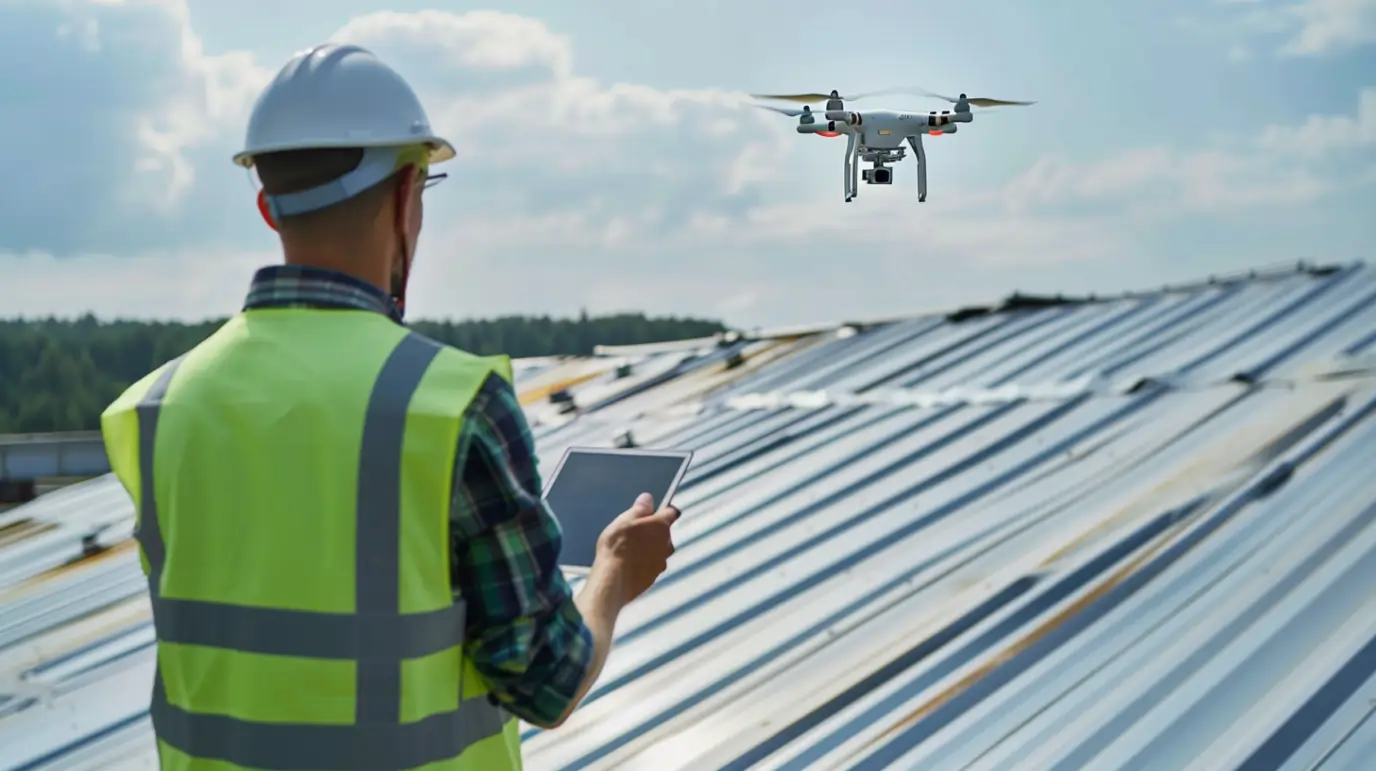
Proven Strategies to Prevent Galvanic Corrosion
Fighting galvanic corrosion starts when you pick the right materials and use ways to protect them. Some good remedies are putting in separation barriers, using metallic coatings, or picking metals that work well together.
Installers can cut down the risk when they make sure water drains away right and do not use hardware that does not match. If you do notice any corrosion, you might need to switch out any panels that are damaged or move the materials that are causing trouble. Let’s go over two of the best ways homeowners and installers can use to stop galvanic corrosion.
Using Protective Barriers and Coatings
Protective barriers effectively prevent electrical contact between dissimilar metals, thus reducing galvanic corrosion. Bituminous membranes and thick metallic coatings keep cathodic metals from contacting anodic surfaces.
For instance, zincalume and pre-painted metal panels offer strong protection when installed correctly. Avoid allowing treated lumber to touch aluminum panels; instead, keep them separate or use insulation. A quality paint layer can also help prevent early corrosion, often mistaken for paint failure.
These barrier methods enhance roof longevity, especially in high-corrosion areas like coastal regions.
Selecting Compatible Metals for Your Roof
Choosing compatible metals on the galvanic scale prevents corrosion. Pairing aluminum panels with stainless steel parts minimizes chemical issues.
If dissimilar metals must be used, relocating connected panels can help. Replacing anodic panels or visibly corroded parts maintains structural integrity. For example, replacing aluminum gutters under copper roofs reduces corrosive water damage.
Careful planning to select supportive metals ensures durability and fewer problems over time.
Why Choose Us
To sum up, it is important to understand and stop galvanic corrosion in metal roofs. This helps keep your roofing strong and long-lasting. If you know the risks and take the right steps—like choosing metals that work well together and adding protective coatings—you can cut down the chance of corrosion problems. Burrage Roofing, an IKO Craftsman Premier Installer and a BBB Accredited Business, has more than 30 years in the exterior restoration field, so they know how to give people the best roofing plans. Don’t wait until it is too late. Get quotes for your commercial roofing needs now and help your investment last for years.
Read pur blog: Proper Flashing Around Chimneys & Vents
Frequently Asked Questions
What types of metal combinations should be avoided on roofs?
Avoid combinations like aluminum with copper or galvanized steel with stainless steel, as they can create galvanic corrosion. These pairings lead to accelerated deterioration due to differing electrochemical potentials, compromising the longevity and integrity of your roofing system.
How can homeowners spot early signs of galvanic corrosion?
Look for any visible corrosion, bubbling, red rust, or loss of paint on the metal. You may also see faded or flaking spots where paint is coming off. These are signs that corrosion or rust may have started. You can find these problems early if you do regular roof checks.
